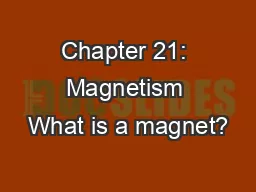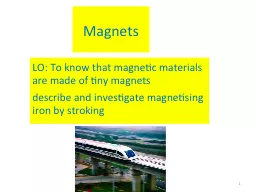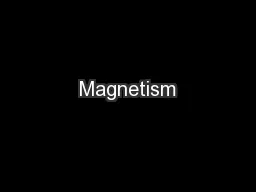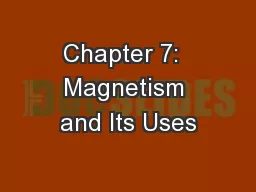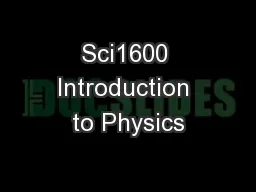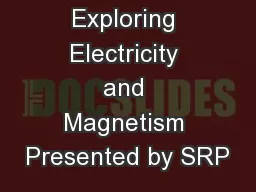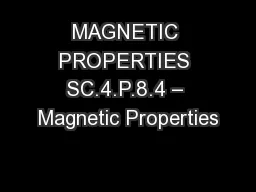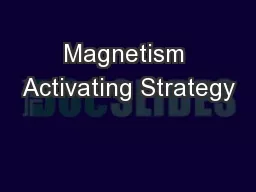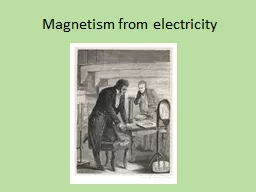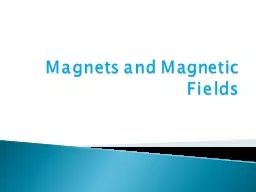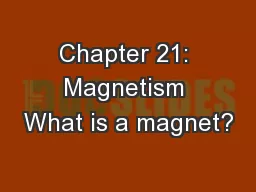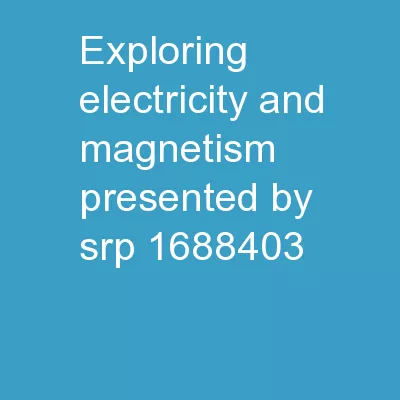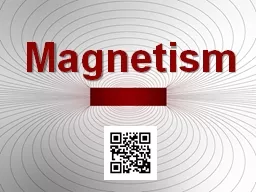PPT-Chapter 21: Magnetism What is a magnet?
Author : tatyana-admore | Published Date : 2018-09-22
A magnet is anything that carries a static magnetic field around with it A magnet has a North and South pole Magnetic lines of flux make up the magnetic field and
Presentation Embed Code
Download Presentation
Download Presentation The PPT/PDF document "Chapter 21: Magnetism What is a magnet?" is the property of its rightful owner. Permission is granted to download and print the materials on this website for personal, non-commercial use only, and to display it on your personal computer provided you do not modify the materials and that you retain all copyright notices contained in the materials. By downloading content from our website, you accept the terms of this agreement.
Chapter 21: Magnetism What is a magnet?: Transcript
Download Rules Of Document
"Chapter 21: Magnetism What is a magnet?"The content belongs to its owner. You may download and print it for personal use, without modification, and keep all copyright notices. By downloading, you agree to these terms.
Related Documents

